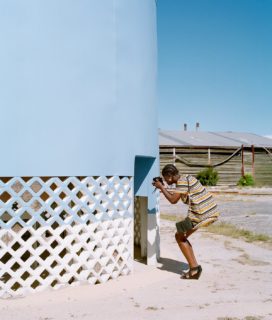
HAD THE mullahs had their way, there would have been no films at all. During the revolution of 1979 their militants lambasted cinemas as centres of Western decadence and burnt them down. One was incinerated in 1978 after its doors were locked, killing about 400 people inside. Once it was over, 32 cinemas shut in the capital. Those that survived pinned sayings of Ayatollah Ruhollah Khomeini, the founder of the Islamic Republic, to their threshold.
More than four decades later, censors still ban all foreign films and local ones deemed counter-revolutionary. Directors need permits to shoot and release their films. Commanders in the Islamic Revolutionary Guard Corps heading big foundations provide funding. The easiest way to get it is to portray battlefield heroics during the Iran-Iraq war or, like a recent one, the use of Western weapons in gassing the Kurds.
Wayward film-makers are subject to travel bans, interrogations and threats. “Start choosing your cemetery,” reads a typical one sent to a director who fled abroad. A brave few refuse to buckle. They submit dummy scripts and survive on shoestring budgets. When the censors ban their films, they distribute them at home (online) and abroad, where they win copious awards. They show Iran as it is, not as the mullahs would like it to be.
Through their lens the theocracy is corrupt, controlling and misogynistic. Its patriarchies crush women. In “Holy Spider”, a zealot solicits prostitutes and with impunity cleanses his holy city, Mashhad, by strangling them. In “Tattoo”, an application for a driving licence ends up before a morality panel because the woman has a tattoo (pictured, below). An uncanny number of films are located in prison, often on death row. Or at night.

Jafar Panahi is the maestro of this samizdat genre. His latest, “No Bears”, is an autobiographical portrait of how he makes movies when banned from film-making and travelling abroad. He relocates to a village on the Turkish border (pictured, top) and directs production in a town on the other side over Skype. His village is quaint and its inhabitants jovial. The sun sparkles. But everything goes wrong. The internet cuts out. The villagers accuse him of photographing an illicit flirtation. He is summoned before a council of male elders and accused of rupturing an arranged marriage. In the stand-off between tradition and modernity, they ask him to swear his innocence on the Koran. He offers to film himself swearing instead.
In his previous films, Mr Panahi retained a flicker of hope. This time he snuffs it out. He could escape. The man-eating bears on the edge of the village, says a resident, are just fiction: “stories made up to scare us. Our fear empowers others.” He is led to the dirt track that crosses the border. He stands on its edge, sees the shimmering lights of a Turkish town, where women have no veils and bars are bustling—and shuffles back.
His female characters are doomed. A rumour ends in an honour crime and in the film-in-a-film, the woman escaping through Turkey drowns. “Little by little he [Mr Panahi] became ever more pessimistic about the future of Iranian society,” says Bahman Ghobadi, a fellow director. “It’s a generation that’s lost its hope.”
The bleakness reflects the reality off-screen. Last year Iran’s hardline president, Ebrahim Raisi, began reimposing the misogyny of 1979. His culture minister, Mohammad Esmaili, immediately issued a report denouncing the film industry. Out of the 77 films made in 2018, he fumed, “59 promoted Western lifestyle, 61 featured shameless women, 50 portrayed a disparaging image of the Iranian society and 55 advocated lawbreaking.”
Directors protested against Iran’s “Talibanisation”. They signed petitions calling on the security forces “to put down your guns”. In response, the authorities threatened to ban their biggest union. They locked some film-makers up: Mr Panahi was sent to Tehran’s notorious Evin prison in July to finish a six-year-sentence, stayed after two months served over a decade ago. (The other was Mohammad Rasoulof, a director whose recent film, “A Man of Integrity”, portrays a system that has none.) “We create works that are not commissioned,” said Mr Panahi in a statement from prison in October. “Therefore those in power see us as criminals.”
These days almost no one goes to the cinema in Iran. The mullahs are again mithering against a medium that distracts from their sermons. The people are preoccupied with protests. And though a few film stars have doffed their veils in support, some Iranians feel betrayed by what they call the moral cowardice of the actors they long cherished. “We’ve been your fans for so many years. Why don’t you come and join us in the streets?” asks a film buff in Tehran.
Despite the oppression, a new generation of directors is secretly working on films free of regime-backed celebrities and censors. A few animations are already emerging: they show women on Iran’s streets without veils. And they are bursting with daylight, colour—and hope.
“No Bears” is showing in British cinemas now




